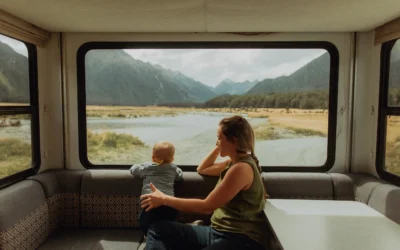
Travel

United CEO Scott Kirby Says Spirit Airlines Will Collapse
United Airlines CEO Scott Kirby didn’t hold back when asked about the future of Spirit Airlines at the APEX Global Expo. Speaking to moderator Brian Sumers, he declared, “That is a fundamentally broken business model, and the consumer has voted. They are going out of business because customers do not like their product.” When pressed on how he could be so sure, Kirby kept it short and confident. He replied with five words: “Because I’m good at math.” Earlier in the week, at the U.S. Chamber of Commerce’s Global Aerospace Summit in Washington, D.C., Kirby used almost the same tone. He described the ULCC model as “an interesting experiment” that ultimately “failed,” Reuters reported. Why Kirby Thinks the Model Doesn’t Work Kirby’s criticism of Spirit comes down to two points: customer satisfaction and financial reality. Spirit relies on ultra-cheap fares to get passengers on board, then adds fees for nearly everything else. For travelers, that often means frustration over paying for bags, seat assignments, or basic comforts. (RELATED NEWS: Noctourism: The Rise of Travel After Dark and How to Do It) According to Kirby, passengers are voting with their wallets. They try Spirit once but don’t always return. That lack of loyalty forces the airline to constantly chase new customers, which is expensive and unstable. In his view, the numbers behind costs, churn, and revenue growth make the business impossible to sustain. Spirit’s Response on Social Media Spirit fired back quickly. In a post on X, the airline wrote: “Scott is finally right about something – it is all about customers. Our Guests love low fares, especially our new Spirit First and Premium Economy options. Maybe that’s why United executives can’t stop yapping about us.” Scott is finally right about something – it is all about customers. Our Guests love low fares, especially our new Spirit First and Premium Economy options. Maybe that’s why United executives can’t stop yapping about us. https://t.co/OXsXQmukDI — Spirit Airlines (@SpiritAirlines) September 9, 2025 With that reply, Spirit defended its place in the market and reminded travelers that affordability is still its core appeal. The airline pointed to its recent upgrades as proof it is not stuck in the past. Signs of Trouble at Spirit Despite Spirit’s defense, the numbers show turbulence. The airline has filed for bankruptcy protection twice in less than a year. Bankruptcy gives a company time to restructure, but repeating the process so quickly signals deeper problems. On top of that, Spirit has pulled back from several cities, including Boise, Albuquerque, and Portland. Route cuts like these shrink its footprint and raise questions about long-term stability. Analysts warn these changes are more than short-term adjustments; they may be symptoms of a business model under serious stress. United’s Opportunity United, meanwhile, is preparing to fill any gaps. Starting in January 2026, the airline will add more flights to Orlando, Las Vegas, and Fort Lauderdale—cities where Spirit has been a dominant player. Kirby’s strategy is clear: if Spirit retreats, United will be there to scoop up the demand. This approach not only helps United grow but also positions it as the reliable choice for travelers who may be tired of the ultra-low-cost experience. What It Means for Travelers For passengers, Spirit’s struggles carry both risks and opportunities. The biggest risk is fewer rock-bottom fare options. Without their pressure on the market, prices could creep higher across the board. Families looking for the cheapest flights may have fewer choices. On the flip side, passengers may benefit from more consistent service. Larger carriers like United can offer smoother travel with fewer surprise charges. While tickets may cost more, the tradeoff could be worth it for travelers who value predictability and comfort. (RELATED NEWS: Take a Family Gap Year: Ditch the Routine and Travel) The Bigger Picture Kirby’s comments also highlight a bigger debate in the airline industry. Can the ultra-low-cost model survive in the United States? Rising labor costs, expensive fuel, and changing consumer expectations make it harder to deliver bare-bones service at scale. Other budget carriers like Frontier and Allegiant will be watching Spirit’s next moves closely. To avoid the same fate, they may need to rethink their fee-heavy approach and find ways to build loyalty without losing their low-fare advantage. Looking Ahead Kirby’s math-based prediction has sparked a conversation about more than just Spirit Airlines. It’s about whether an entire business model can still work in today’s travel market. They insist their customers love low fares, but repeated bankruptcies and shrinking routes suggest the pressure is real. United is betting on that pressure leading to opportunity. By moving into Spirit’s strongest markets, it hopes to capture both passengers and loyalty. Whether Kirby’s prediction comes true remains to be seen, but his warning has forced the industry—and travelers—to take a hard look at what really works in air travel today. Unmask the Narrative. Rip Through the Lies. Spread the Truth. At The Modern Memo, we don’t polish propaganda — we tear it to shreds. The corporate press censors, spins, and sugarcoats. We don’t. If you’re tired of being misled, silenced, and spoon-fed fiction, help us expose what they try to hide. Truth matters — but only if it’s heard. So share this. Shake the silence. And remind the powerful they don’t own the story.

Take a Family Gap Year: Ditch the Routine and Travel
Hayley and Lewis Trow, a couple from the U.K., decided to trade their regular jobs and home life for a gap year adventure with their six-year-old daughter, Nyla. They left their jobs, moved out of their permanent home, and embraced a life of travel and discovery. To their surprise, the costs of being on the road dropped significantly—by nearly 50%. What used to cost them around $5,000–$6,300 (£4,000-£5,000) per month at home now comes closer to $2,500–$3,800 (£2,000–£3,000) while traveling, Fox News Reports. They manage this by strict budgeting, cutting unnecessary expenses, choosing less expensive accommodations, and adjusting their lifestyle to the demands of travel. Education for Nyla continues via online tutoring aligned with the U.K. curriculum, and when in Bali she attends a temporary multicultural school. While the choice wasn’t easy—they gave up stability, faced questions from friends and family, and navigated unknowns—they value the time together and the experiences. They say that witnessing the world through their daughter’s eyes has made the change more than worth it. (RELATED NEWS: Noctourism: The Rise of Travel After Dark and How to Do It) Affordable Family Travel Tips That Work Many families dream of taking time away from routine to travel together. The good news is that family gap year or long-term travel doesn’t have to be out of reach. With planning, discipline, and flexibility, exploring the world with kids can cost less than staying home. Here are strategies that help families save money, simplify their lifestyle, and turn extended travel into something achievable: Clarify Your “Why” Before making any big changes, define your purpose. Some families want more quality time together, others want their kids to learn from new cultures, and some simply want a gap year to slow down and break free from routine. Your “why” shapes your plan. If it’s cultural learning, you may choose to stay longer in one place. If it’s bonding, you might focus on shared experiences. Having a clear reason keeps you motivated when budgets get tight or travel feels overwhelming. Build a Realistic Budget List your current expenses: housing, food, transportation, schooling, recreation, insurance. Estimate travel costs: lodging, flights, visas, food, schooling or tutoring, gear. Compare the two. For many families, travel can actually cost less once big fixed costs are reduced. Save With Intention Automate savings by moving a set amount each month into a travel account. Cut unnecessary spending like subscriptions, impulse purchases, or luxury extras. Pay down high-interest debt early to free up more money for travel. Stay Flexible and Look for Deals Be open about where and when you travel. Off-peak seasons often mean lower prices. Use price alerts, rewards programs, and comparison tools to find cheaper flights and lodging. Choose smaller accommodations and keep baggage to a minimum to avoid extra costs. Plan for Education and Daily Needs If you have school-age children, research options such as remote schooling, online tutoring, or temporary local schools abroad. Also, plan ahead for healthcare and travel insurance to avoid unexpected expenses. (MORE NEWS: Insurance Drones: Hidden Home Inspections Spark Backlash) Embrace Simpler Living Pack light and keep wardrobes minimal. Stay in guesthouses or short-term rentals instead of hotels. Cook meals at home or eat local food rather than dining out every day. Reduce costs at home by downsizing, renting out your house, or selling a car. Test With Shorter Trips You don’t have to commit to a full year of travel immediately. Try smaller steps: A month-long trip instead of twelve. A sabbatical or extended summer break. Remote work or job sharing if possible. These trial runs help you see what works for your family’s routine, finances, and schooling before you make a bigger leap. From Dream to Lifestyle Family gap years or extended travel with children is not just for the wealthy. Families can afford it by planning carefully, budgeting wisely, and living with intention. The key is to trade unnecessary expenses for meaningful experiences and to choose flexibility over routine. This kind of lifestyle doesn’t happen overnight. It grows from small, consistent steps: building savings, practicing minimalism, and learning how to stretch every dollar. Each adjustment brings you closer to a family rhythm that prioritizes experiences over possessions. The rewards go far beyond saving money. Gap year travel offers kids new cultures, languages, and friendships they may never experience in a classroom. It gives parents more time with their children, away from packed schedules and constant distractions. The memories created often outweigh anything a new car or gadget could provide. With clear priorities and a willingness to simplify, you can transform family travel from a distant dream into a sustainable way of life. Whether it’s a summer abroad, a semester on the road, or a full year of exploration, the choice to step out of routine can change not just where you live—but how you live as a family. The Modern Memo — where lifestyle news isn’t shallow, soft, or sold out. From what you eat to what you buy, we cover the choices that shape your freedom, health, and future — without the influencer fluff or corporate agenda. Real life deserves real reporting. And we’re here to give it to you straight.

Noctourism: The Rise of Travel After Dark and How to Do It
Noctourism offers a fresh way to travel. It invites people to explore the world after night falls. It shifts tourism from daylight into moonlight. This growing trend delivers unique experiences. It sparks curiosity. And it offers a new edge in a crowded travel market. What Is Noctourism? Noctourism means sightseeing after dark. It includes stargazing, night safaris, evening city tours, and guided walks. Travelers trade daytime crowds for quiet nights. They seek a new perspective. Landmarks and landscapes look different when the sun goes down. Shadows and light create drama. This trend reshapes how we experience destinations. Why It’s Rising Interest is growing quickly. A Booking.com survey showed that over 60% of travelers are now considering planning trips built around nighttime activities. Tour operators also report sharp increases in demand. Millennials play a key role in driving this change. Many want meaningful experiences at night that don’t center on alcohol. For them, noctourism blends adventure, culture, and wellness in one. A Solution to Overtourism Tourist hotspots often feel overwhelmed during the day. Noctourism offers relief. Visiting landmarks after hours means fewer crowds. It also transforms familiar sights into something fresh. A cathedral lit by moonlight feels different than in the glare of noon. A canyon under the stars reveals a beauty missed by day. Night gives destinations a second life. Night Safaris and Wildlife Encounters Wildlife tours illustrate the power of noctourism. Many mammals are nocturnal. A daytime safari may miss most of them. At night, the landscape changes. Safari operators highlight rare creatures that only appear in the dark. Travelers can see aardvarks, porcupines, or big cats in their natural rhythm. (MORE NEWS: Back-to-School 2025: How Parents Are Spending) Beyond Africa, other regions embrace night wildlife tours. In Madagascar and Costa Rica, lodges lead guided walks after sunset. In the Amazon, canoe trips reveal glowing eyes of caimans on the riverbank. Night travel makes the invisible visible. It allows travelers to connect with nature in a deeper way. Chasing the Aurora and Starry Skies The Northern Lights are a leading force behind noctourism. The aurora industry has grown into a multimillion-dollar sector. Strong solar activity in 2024 and 2025 has made conditions even better. Travel groups in northern regions report higher bookings for aurora hunts. People travel for thousands of miles to see them. Stargazing also draws interest. With light pollution clouding the night sky for much of the world, travelers search for dark-sky reserves and national parks. These places offer the Milky Way in its full glory. The night sky becomes both destination and attraction. Tips for Safe and Rewarding Noctourism Travel experts stress preparation. First, choose destinations known for safe and organized night experiences. National parks, wildlife lodges, and guided tours add structure and security. Second, match your trip with lunar cycles. New-moon periods bring the darkest skies for stargazing. Full moons, on the other hand, light up landscapes and create unique effects such as lunar rainbows at waterfalls. Gear matters. A headlamp with red and white light preserves night vision and prevents glare. Layered clothing protects against cool evening air. Guides add the final touch. Local experts ensure safety and share stories that bring depth to the experience. In Canada’s Yellowknife, for example, Indigenous guides mix aurora viewing with cultural insights, giving visitors both wonder and wisdom. Cultural and Urban Experiences After Dark Noctourism isn’t limited to nature. Cities also come alive at night. Some destinations open museums, temples, or historic landmarks after hours. Others host night markets where food, art, and music collide. Lantern festivals and moonlit ceremonies add cultural flavor. Travelers who join these events discover traditions and atmospheres hidden from the daytime schedule. Urban night tours now include architecture walks, cycling routes, and rooftop explorations. Seeing a skyline from a lit bridge or ancient ruins glowing under spotlights changes perception. Night transforms the ordinary into the extraordinary. (MORE NEWS: Phone Scrolling: The Top 10 States and Hidden Costs) How to Plan Your Noctourism Journey Start by asking what excites you most. If stars call to you, find a certified dark-sky reserve or a remote national park. If wildlife draws you in, look for night safaris in Africa, South America, or Asia. If culture interests you, check for cities that host after-dark museum access or seasonal festivals. Research timing. Aim for clear skies, new moons, or special celestial events. For aurora seekers, 2025 will provide more peak opportunities. For cultural travelers, align trips with festivals tied to lunar calendars. Planning around natural cycles makes every night more meaningful. Finally, pack smart. Bring comfortable shoes, flashlights, and clothes for cooler temperatures. Book guided tours when safety is a concern. Noctourism rewards the prepared traveler with unforgettable memories. Final Thoughts Noctourism redefines how we see the world. It turns familiar attractions into thrilling new experiences. It caters to curiosity and imagination. It allows travelers to witness stars, wildlife, and cultures in their natural rhythm. As tourism evolves, the night becomes the new frontier. Noctourism invites us to step out after dark. To leave behind the ordinary. To discover the extraordinary. And to see the world in a new light. The Modern Memo — where lifestyle news isn’t shallow, soft, or sold out. From what you eat to what you buy, we cover the choices that shape your freedom, health, and future — without the influencer fluff or corporate agenda. Real life deserves real reporting. And we’re here to give it to you straight.
